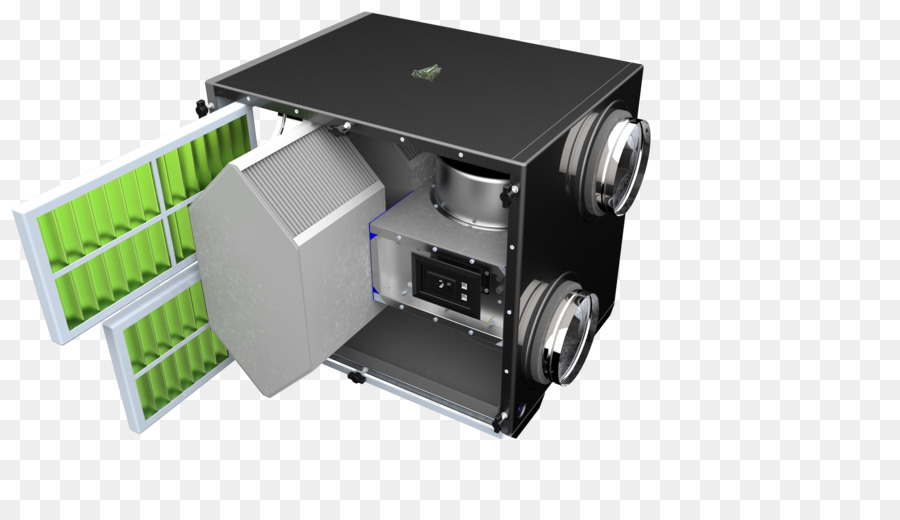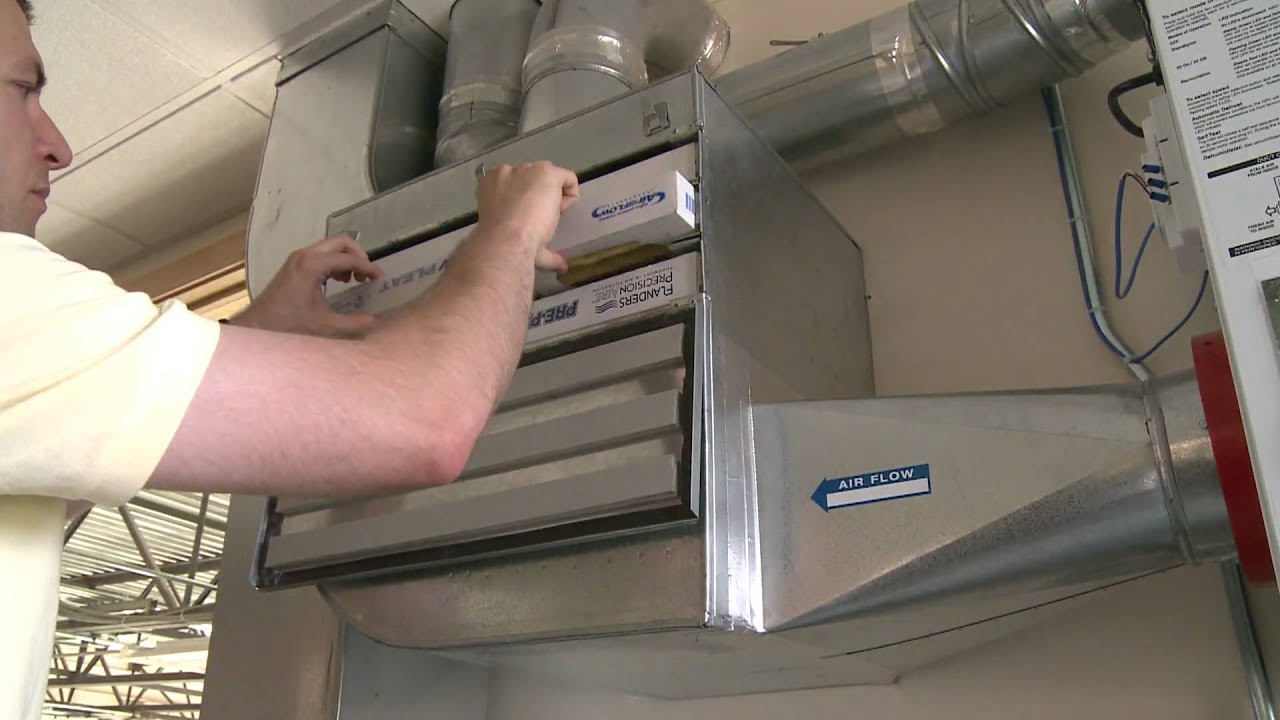Are you looking for ways to reduce energy consumption and become more sustainable? Then air heat recovery is the solution for you. By capturing and reusing wasted heat, they can reduce energy costs while helping to create a greener tomorrow. In this blog post, we’ll discuss the benefits of recovery heat exchangers and how they can unlock energy savings in your business.
What Is Air Heat Exchanger?
An air heat exchanger is a device that transfers heat from one air stream to another without them mixing. It is designed to capture and reuse wasted heat, making it an efficient solution for reducing energy consumption and costs.
The concept behind a heat exchanger is relatively simple. It consists of two separate air streams that flow through the exchanger in opposite directions. One air stream, such as exhaust air, is usually from inside a building, while the other is fresh air from outside. The two air streams pass through separate channels designed to maximize heat transfer while keeping the air streams separate.
The heat from the warm air is transferred to the cool air, making the incoming and outgoing air warmer. This process allows for the recovery of heat that would otherwise be lost. The recovered heat can then preheat the incoming air, reducing the energy required to heat or cool it.
Benefits of Using Air To Air Heat Exchanger Residential System
Air to air heat exchanger residential systems offer a range of benefits that make them a smart choice for reducing energy consumption and increasing sustainability in your home. One of the primary advantages is the potential for significant energy savings. These systems can reduce the energy needed to heat or cool your home by capturing and reusing wasted heat. This can result in lower utility bills and long-term cost savings.
In addition to energy savings, air to air heat exchangers improve indoor air quality. By continuously exchanging stale indoor air with fresh outdoor air, these systems help remove pollutants and allergens from your home. This can result in healthier and more comfortable living conditions for you and your family.
Another benefit of these systems is their reduced environmental impact. By using recovered heat, air to air heat exchangers reduce the need for fossil fuels and decrease greenhouse gas emissions. This can contribute to a greener and more sustainable future.
Choosing an air to air heat residential system is a smart investment. It reduces energy consumption, saves money, and improves indoor air quality and helps protect the environment. You can enjoy a more comfortable and sustainable home by embracing this technology.
Air To Air Heat Exchanger Applications
Air to air heat exchangers have a wide range of applications across various industries and residential settings. One of the most common applications is in commercial buildings, where these systems can efficiently heat or cool large spaces while reducing energy consumption. They can be used in office buildings, hospitals, schools, and other commercial spaces to provide a comfortable and sustainable indoor environment.
Another important application is in residential settings, where air to air heat exchangers can be installed in homes to improve indoor air quality and reduce energy costs. These systems are especially beneficial for houses in climates with extreme temperatures, as they can help regulate indoor temperatures and reduce the need for constant heating or cooling.
Air to air heat exchanger is also commonly used in industrial settings, where it can recover waste heat from manufacturing processes and reuse it for various purposes. This can help industries reduce their carbon footprint and save on energy costs.
Overall, the applications of air to air heat exchangers are vast and varied. They are a versatile solution for reducing energy consumption, improving indoor air quality, and promoting sustainability across different sectors.
How Recovery Heat Exchangers Work?
Recovery heat exchangers are ingenious devices that tirelessly capture and reuse wasted heat. But how exactly do they work? Let’s dive into the mechanics of these energy-saving wonders.
At their core, recovery heat exchangers consist of two separate air streams that flow through the exchanger in opposite directions. One air stream, such as exhaust air, typically comes from inside a building, while the other is fresh air from outside. These air streams pass through separate channels specifically designed to maximize heat transfer while keeping them separate.
As the warm air flows through the exchanger, its heat is transferred to the cooler air, making the incoming air warmer and the outgoing air cooler. The energy required to heat or cool the incoming air is significantly reduced by recovering this otherwise lost heat.
The recovered heat can preheat the incoming air, reducing energy consumption and costs. This saves you money and helps create a more sustainable future.
With recovery heat exchangers, your business can unlock energy savings and positively impact the environment. It’s a win-win situation for both your bottom line and the planet.
 Factors to Consider When Choosing Hot Air Exchanger
Factors to Consider When Choosing Hot Air Exchanger
When choosing a hot air exchanger for your needs, several important factors must be considered. Firstly, you’ll want to determine the size and capacity of the exchanger suitable for your space. Consider the volume of air that needs to be exchanged and choose an exchanger that can handle the required airflow.
Next, take into account the efficiency of the air exchanger. Look for models with high heat recovery efficiency, as this will maximize energy savings and reduce your overall energy consumption. Additionally, consider the specific heat recovery method employed by the exchanger. There are different types of heat recovery systems, such as rotary and plate heat exchangers, each with advantages and disadvantages.
Another important factor to consider is the maintenance requirements of the air exchanger. Choose a model that is easy to clean and maintain to ensure optimal performance and longevity. Additionally, consider the noise level of the exchanger, especially if it will be installed in a residential setting.
Lastly, consider the air exchanger’s cost, including the upfront investment and the long-term operating costs. While finding a model that fits your budget is important, choosing a high-quality exchanger that will deliver reliable and efficient performance is equally important.
By carefully considering these factors, you can select the right air exchanger for your needs, ensuring energy savings, efficiency, and a greener tomorrow.
Installation and Maintenance Tips for Energy Recovery Heat Exchanger
Proper installation and regular maintenance are essential for ensuring the optimal performance and longevity of your energy recovery heat exchanger. Here are some helpful tips to keep in mind:
- Professional installation: It’s important to have your heat exchanger installed by a qualified professional. They will ensure it is properly sized, correctly connected to your HVAC system, and positioned in the most efficient location.
- Regular cleaning: Over time, dust, dirt, and other debris can accumulate on the heat exchanger’s surfaces, hindering its performance. Regularly clean the unit according to the manufacturer’s instructions to keep it functioning at its best.
- Check the filters: Many heat exchangers have filters that need to be replaced or cleaned periodically. Check these filters regularly and clean or replace them to maintain airflow and prevent clogs.
- Monitor airflow: Keep an eye on the airflow in and out of the heat exchanger. If you notice any significant decrease in airflow, it may indicate a problem with the unit or a need for cleaning.
- Schedule maintenance checks: Consider scheduling regular maintenance checks with a professional to ensure your heat exchanger operates efficiently. They can inspect the unit, make any necessary adjustments, and address any potential issues before they become major problems.
By following these installation and maintenance tips, you can maximize the energy efficiency and longevity of your energy recovery exchanger, helping you save money and reduce your environmental impact.
Maximizing Energy Efficiency with Fresh Air Heat Recovery Unit
Looking to take your energy efficiency to the next level? A fresh air heat recovery unit is the solution you need. These units capture and recycle heat from the air inside your home, transferring it to the incoming fresh air. This process allows you to maximize the energy efficiency of your heating and cooling systems.
By installing a fresh air recovery unit, you can significantly reduce your energy consumption and lower your utility bills. These units are designed to work seamlessly with your HVAC system, ensuring your home remains comfortable and efficient all year round.
In addition to energy savings, fresh air heat recovery units improve indoor air quality. By continuously exchanging stale indoor air with fresh outdoor air, these units help remove pollutants and allergens from your home, creating a healthier living environment for you and your family.
Don’t miss out on the opportunity to maximize energy efficiency and improve indoor air quality. Install a fresh air recovery unit today and reap the benefits of a greener and more sustainable home.
FAQs
Q: Are recovery heat exchangers expensive to install?
A: The cost of installing a recovery heat exchanger can vary depending on factors such as the size of your space, the specific system you choose, and the complexity of the installation. However, it’s important to consider the long-term cost savings that these systems can provide. By reducing your energy consumption, recovery heat exchangers can help lower your utility bills, offsetting the initial investment.
Q: Do recovery heat exchangers require a lot of maintenance?
A: Recovery heat exchangers do require some maintenance to ensure optimal performance. Regular unit cleaning is necessary to remove any dust or debris that may accumulate on the surfaces. Additionally, some heat exchangers have filters that need to be cleaned or replaced periodically. However, the maintenance requirements are generally minimal and can be easily managed with regular inspections and cleaning.
Q: Can air heat recovery be used in all types of buildings?
A: Recovery heat exchangers can be used in many buildings, including residential homes, commercial buildings, and industrial facilities. They are versatile systems tailored to fit different spaces and applications. Whether you’re looking to improve energy efficiency in your home or reduce heating and cooling costs in a large office building, a recovery heat exchanger solution can meet your needs.
Conclusion
In today’s world, where energy efficiency and sustainability are paramount, recovery heat exchangers have emerged as a game-changer. These innovative devices offer numerous benefits for businesses and homeowners alike by capturing and reusing wasted heat. Not only do they help reduce energy consumption and costs, but they also contribute to a greener and more sustainable future. Air recovery heat exchangers are a powerful energy savings and sustainability tool. By embracing this technology, you can unlock the potential for a greener and more efficient tomorrow. So why wait? Start harnessing wasted heat today and positively impact the environment and your bottom line.



